Latest Posts by matthewjopdyke - Page 5
When Dead Stars Collide!
Gravity has been making waves - literally. Earlier this month, the Nobel Prize in Physics was awarded for the first direct detection of gravitational waves two years ago. But astronomers just announced another huge advance in the field of gravitational waves - for the first time, we’ve observed light and gravitational waves from the same source.

There was a pair of orbiting neutron stars in a galaxy (called NGC 4993). Neutron stars are the crushed leftover cores of massive stars (stars more than 8 times the mass of our sun) that long ago exploded as supernovas. There are many such pairs of binaries in this galaxy, and in all the galaxies we can see, but something special was about to happen to this particular pair.

Each time these neutron stars orbited, they would lose a teeny bit of gravitational energy to gravitational waves. Gravitational waves are disturbances in space-time - the very fabric of the universe - that travel at the speed of light. The waves are emitted by any mass that is changing speed or direction, like this pair of orbiting neutron stars. However, the gravitational waves are very faint unless the neutron stars are very close and orbiting around each other very fast.

As luck would have it, the teeny energy loss caused the two neutron stars to get a teeny bit closer to each other and orbit a teeny bit faster. After hundreds of millions of years, all those teeny bits added up, and the neutron stars were *very* close. So close that … BOOM! … they collided. And we witnessed it on Earth on August 17, 2017.

Credit: National Science Foundation/LIGO/Sonoma State University/A. Simonnet
A couple of very cool things happened in that collision - and we expect they happen in all such neutron star collisions. Just before the neutron stars collided, the gravitational waves were strong enough and at just the right frequency that the National Science Foundation (NSF)’s Laser Interferometer Gravitational-Wave Observatory (LIGO) and European Gravitational Observatory’s Virgo could detect them. Just after the collision, those waves quickly faded out because there are no longer two things orbiting around each other!
LIGO is a ground-based detector waiting for gravitational waves to pass through its facilities on Earth. When it is active, it can detect them from almost anywhere in space.

The other thing that happened was what we call a gamma-ray burst. When they get very close, the neutron stars break apart and create a spectacular, but short, explosion. For a couple of seconds, our Fermi Gamma-ray Telescope saw gamma-rays from that explosion. Fermi’s Gamma-ray Burst Monitor is one of our eyes on the sky, looking out for such bursts of gamma-rays that scientists want to catch as soon as they’re happening.
And those gamma-rays came just 1.7 seconds after the gravitational wave signal. The galaxy this occurred in is 130 million light-years away, so the light and gravitational waves were traveling for 130 million years before we detected them.

After that initial burst of gamma-rays, the debris from the explosion continued to glow, fading as it expanded outward. Our Swift, Hubble, Chandra and Spitzer telescopes, along with a number of ground-based observers, were poised to look at this afterglow from the explosion in ultraviolet, optical, X-ray and infrared light. Such coordination between satellites is something that we’ve been doing with our international partners for decades, so we catch events like this one as quickly as possible and in as many wavelengths as possible.

Astronomers have thought that neutron star mergers were the cause of one type of gamma-ray burst - a short gamma-ray burst, like the one they observed on August 17. It wasn’t until we could combine the data from our satellites with the information from LIGO/Virgo that we could confirm this directly.

This event begins a new chapter in astronomy. For centuries, light was the only way we could learn about our universe. Now, we’ve opened up a whole new window into the study of neutron stars and black holes. This means we can see things we could not detect before.

The first LIGO detection was of a pair of merging black holes. Mergers like that may be happening as often as once a month across the universe, but they do not produce much light because there’s little to nothing left around the black hole to emit light. In that case, gravitational waves were the only way to detect the merger.

Image Credit: LIGO/Caltech/MIT/Sonoma State (Aurore Simonnet)
The neutron star merger, though, has plenty of material to emit light. By combining different kinds of light with gravitational waves, we are learning how matter behaves in the most extreme environments. We are learning more about how the gravitational wave information fits with what we already know from light - and in the process we’re solving some long-standing mysteries!
Want to know more? Get more information HERE.
Make sure to follow us on Tumblr for your regular dose of space: http://nasa.tumblr.com

💜 - Matthew Opdyke
Nice view of Earth...
Our pale blue dot, planet Earth, is seen in this video captured by NASA astronaut Jack Fischer from his unique vantage point on the International Space Station. From 250 miles above our home planet, this time-lapse imagery takes us over the Pacific Ocean’s moon glint and above the night lights of San Francisco, CA. The thin hue of our atmosphere is visible surrounding our planet with a majestic white layer of clouds sporadically seen underneath.
The International Space Station is currently home to 6 people who are living and working in microgravity. As it orbits our planet at 17,500 miles per hour, the crew onboard is conducting important research that benefits life here on Earth.
Make sure to follow us on Tumblr for your regular dose of space: http://nasa.tumblr.com
What are white dwarfs?
Some curiosities about white dwarfs, a stellar corpse and the future of the sun.

Where a star ends up at the end of its life depends on the mass it was born with. Stars that have a lot of mass may end their lives as black holes or neutron stars.

A white dwarf is what stars like the Sun become after they have exhausted their nuclear fuel. Near the end of its nuclear burning stage, this type of star expels most of its outer material, creating a planetary nebula.

In 5.4 billion years from now, the Sun will enter what is known as the Red Giant phase of its evolution. This will begin once all hydrogen is exhausted in the core and the inert helium ash that has built up there becomes unstable and collapses under its own weight. This will cause the core to heat up and get denser, causing the Sun to grow in size.
It is calculated that the expanding Sun will grow large enough to encompass the orbit’s of Mercury, Venus, and maybe even Earth.

A typical white dwarf is about as massive as the Sun, yet only slightly bigger than the Earth. This makes white dwarfs one of the densest forms of matter, surpassed only by neutron stars and black holes.
The gravity on the surface of a white dwarf is 350,000 times that of gravity on Earth.

White dwarfs reach this incredible density because they are so collapsed that their electrons are smashed together, forming what is called “degenerate matter.” This means that a more massive white dwarf has a smaller radius than its less massive counterpart. Burning stars balance the inward push of gravity with the outward push from fusion, but in a white dwarf, electrons must squeeze tightly together to create that outward-pressing force. As such, having shed much of its mass during the red giant phase, no white dwarf can exceed 1.4 times the mass of the sun.

While many white dwarfs fade away into relative obscurity, eventually radiating away all of their energy and becoming a black dwarf, those that have companions may suffer a different fate.

If the white dwarf is part of a binary system, it may be able to pull material from its companion onto its surface. Increasing the mass can have some interesting results.
One possibility is that adding more mass to the white dwarf could cause it to collapse into a much denser neutron star.

A far more explosive result is the Type 1a supernova. As the white dwarf pulls material from a companion star, the temperature increases, eventually triggering a runaway reaction that detonates in a violent supernova that destroys the white dwarf. This process is known as a single-degenerate model of a Type 1a supernova.

If the companion is another white dwarf instead of an active star, the two stellar corpses merge together to kick off the fireworks. This process is known as a double-degenerate model of a Type 1a supernova.

At other times, the white dwarf may pull just enough material from its companion to briefly ignite in a nova, a far smaller explosion. Because the white dwarf remains intact, it can repeat the process several times when it reaches the critical point, briefly breathing life back into the dying star over and over again.
Image credit: www.aoi.com.au/ NASA/ ESA/ Hubble/ Wikimedia Commons/ Fsgregs/ quora.com/ quora.com/ NASA’s Goddard Space Flight Center/S. Wiessinger/ ESO/ ESO/ Chandra X-ray Observatory
Source: NASA/ NASA/ space.com

Challenge and tragedy comes to everyone, it does not discriminate between good or bad... Our resolve to overcome these challenges and tragedies while maintaining our kindness and compassion, our dignity and grace, our vision to see a broader perspective and our strength of character to persevere are how we should measure ourselves... Only judge others based on the level of kindness they demonstrate, no matter what life brings, but be kind and love no matter the burden or reward... - 💜 -- Matt Opdyke

The Transit Method of Detecting Extrasolar Planets
When a planet crosses in front of its star as viewed by an observer, the event is called a transit. Transits by terrestrial planets produce a small change in a star’s brightness of about 1/10,000 (100 parts per million, ppm), lasting for 2 to 16 hours. This change must be absolutely periodic if it is caused by a planet. In addition, all transits produced by the same planet must be of the same change in brightness and last the same amount of time, thus providing a highly repeatable signal and robust detection method.
Image credit: NASA | Source: NASA

You’re looking at a real big deal.
Because in a nanotechnology lab, big deals come in smaller and smaller packages. What you see above is an extreme close-up of a 5 nanometer transistor. In an industry-first, the IBM Research Alliance developed nanosheet transistors that will enable a 5 nm chip. What’s so big about that? Well, by achieving a scale of 30 billion switches on a fingernail sized chip, it can deliver significant enhancements over today’s state-of-the-art 10 nm chips. This not only improves the performance of current technologies but also provides the fuel for the future demands of AI, VR, quantum and mobile technologies to run on. Plus, it could also make things like smartphone batteries last 2-3x longer between charges, so it may also be a real lifesaver too.
Learn more about it->
That's beautiful! :)
Milky way over Mount Hood from Laurence Lake, Oregon

As I write and as I share, my main three priorities in a more converged manner are 1. Biology, 2. Neurology, and 3. Physics, as I have described in this meme.
I was curious about a closeup of Saturn's rings... nice!





52 of Cassini’s most beautiful postcards from the outer solar system
The spacecraft completely changed our view of Saturn and her moons
One of NASA’s greatest spacecraft will call it quits on September 15, 2017. The Cassini spacecraft has made countless discoveries during its sojourn to Saturn and its surrounding moons. It has also sent back nearly 400,000 images, many of which are purely spectacular, with surely more to come during the final months of the mission as Cassini explores new territory between Saturn and its rings.
In honor of the brave spacecraft, we spent hours sifting through the deluge of images to highlight some of Cassini’s best views from Saturn.
See all 52 ~ Popular Science
Image credits: NASA
Pretty nice representation of Earth on through to the observable universe

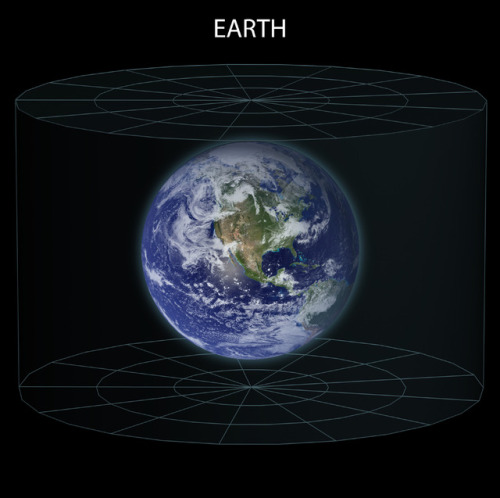
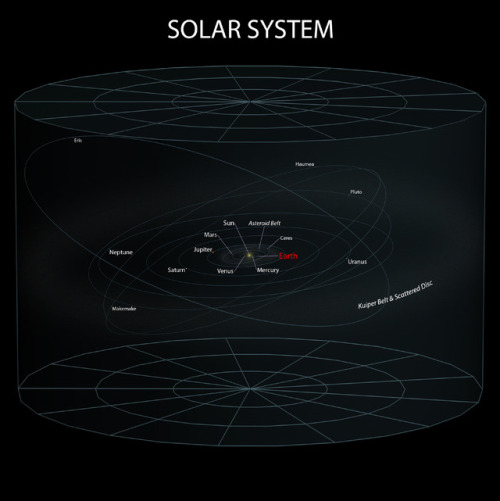
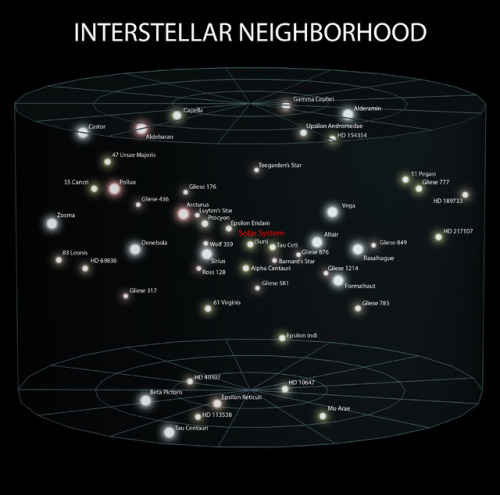
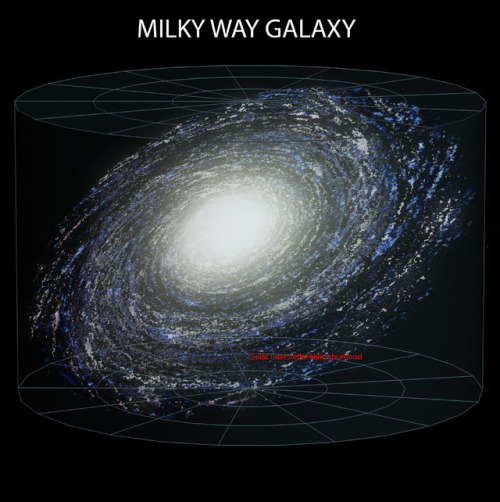
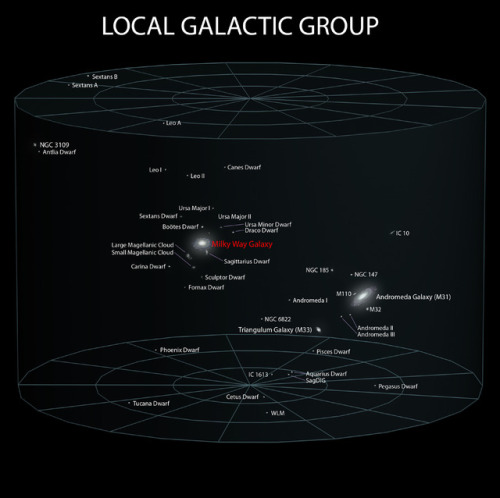
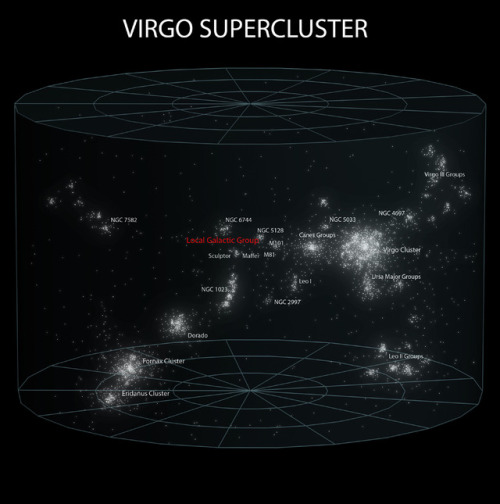
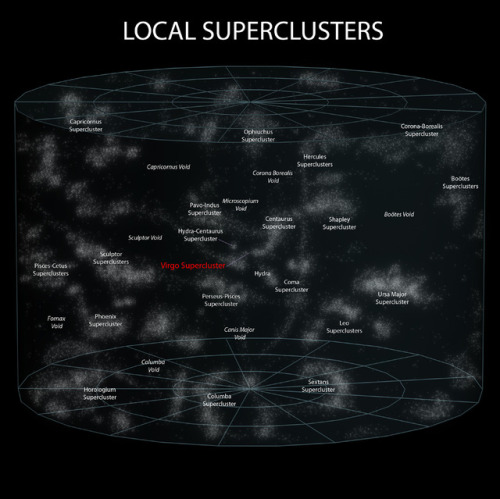
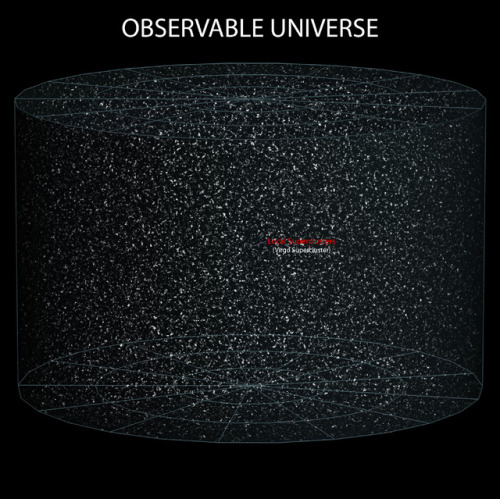
~ wikimedia commons
I'm very much looking forward to this. ☺

Two Webb instruments well suited for detecting exoplanet atmospheres
The best way to study the atmospheres of distant worlds with the James Webb Space Telescope, scheduled to launch in late 2018, will combine two of its infrared instruments, according to a team of astronomers.
“We wanted to know which combination of observing modes (of Webb) gets you the maximum information content for the minimum cost,” says Natasha Batalha, graduate student in astronomy and astrophysics and astrobiology, Penn State, and lead scientist on this project.
“Information content is the total amount of information we can get from a planet’s atmospheric spectrum, from temperature and composition of the gas - like water and carbon dioxide - to atmospheric pressures.”
Batalha and Michael Line, assistant professor, School of Earth and Space Science, Arizona State University, developed a mathematical model to predict the quantity of information that different Webb instruments could extract about an exoplanet’s atmosphere.
Their model predicts that using a combination of two infrared instruments - the Near Infrared Imager and Slitless Spectrograph (NIRISS) and the G395 mode on the Near Infrared Spectrograph (NIRSpec) - will provide the highest information content about an exoplanet’s atmosphere.
Read more ~ SpaceDaily
Image: Inspecting JWST’s primary mirror. Credit: NASA–C. Gunn
Wow, quite a career!

Ever want to ask a real life astronaut a question? Here’s your chance!
Astronaut Jeanette Epps will be taking your questions in an Answer Time session on Friday, May 5 from 10am - 11am ET here on NASA’s Tumblr. See the questions she’s answered by visiting nasa.tumblr.com/tagged/answertime!
NASA astronaut Jeanette J. Epps (Ph.D.) was selected as an astronaut in 2009. She has been assigned to her first spaceflight, which is scheduled to launch in May 2018. Her training included scientific and technical briefings, intensive instruction in International Space Station systems, spacewalk training, robotics, T‐38 flight training and wilderness survival training.
Before becoming an astronaut, Epps worked as a Technical Intelligence Officer at the Central Intelligence Agency (CIA).
Born in Syracuse, New York. Enjoys traveling, reading, running, mentoring, scuba diving and family.
She has a Bachelor of Science in Physics from LeMoyne College, as well as a Master of Science and Doctorate of Philosophy in Aerospace Engineering from the University of Maryland.
Follow Jeanette on Twitter at @Astro_Jeanette and follow NASA on Tumblr for your regular dose of space.










What’s The Largest Planet In The Universe?
“Above a certain mass, the atoms inside large planets will begin to compress so severely that adding more mass will actually shrink your planet. This happens in our Solar System, explaining why Jupiter is three times Saturn’s mass, but only 20% physically larger. But many solar systems have planets made out of much lighter elements, without large, rocky cores inside.”
You might think that Jupiter is the largest planet in the Solar System because it’s the most massive, but that’s not quite right. If you kept adding mass to Saturn, it would get larger in size, but if you kept adding mass to Jupiter, it would shrink! For a given set of elements that your planet is made out of, there’s a maximum size it can reach, that’s somewhere in between the mass of Saturn and Jupiter in general. Our Solar System is on the dense side of things, meaning that we’ve discovered a large number of exoplanets out there that are approximately twice the physical size of Jupiter without becoming brown dwarfs or hydrogen-fusing stars. For worlds like WASP-17b, where we’ve measured both the radius and mass, we find that they’re only about half the mass of Jupiter, despite being double the size.
Come get the full scientific story, and some very informative and illustrative images with no more than 200 words, on today’s Mostly Mute Monday!
Interesting project. :)








How To Prove Einstein’s Relativity For Less Than $100
“But the fact that you can see cosmic ray muons at all is enough to prove that relativity is real. Think about where these muons are created: high in the upper atmosphere, about 30-to-100 kilometers above Earth’s surface. Think about how long a muon lives: about 2.2 microseconds on average. And think about the speed limit of the Universe: the speed of light, or about 300,000 kilometers per second. If you have something moving at the speed of light that only lives 2.2 microseconds, it should make it only 0.66 kilometers before decaying away. With that mean lifetime, less than 1-in-10^50 muons should reach the surface. But in reality, almost all of them make it down.”
Relativity, or the idea that space and time are not absolute, was one of the most revolutionary and counterintuitive scientific theories to come out of the 20th century. It was also one of the most disputed, with hundreds of scientists refusing to accept it. Yet with less than $100 and a single day’s worth of labor, there’s a way you can prove it to yourself: by building a cloud chamber. An old fishtank, some 100% ethyl or isopropyl alcohol, a metal base with dry ice beneath it and only a few other steps (see the full article for instructions) will allow you to construct a detector capable of seeing unstable cosmic particles. Yet these particles – and you’ll see about 1-per-second – would never reach Earth’s surface if it weren’t for relativity!
Come learn how you can validate Einstein’s first great revolution all for yourself, and silence the doubts in your mind. Nature really is this weird!
A nice little summary of stars that passed nearby, or that may yet pass by, and their affects on our solar system...











http://futurismnews.tumblr.com/
Happy International Women’s Day!

Today we celebrate International Women’s Day, a day in which we honor and recognize the contributions of women…both on Earth and in space.

Since the beginning, women have been essential to the progression and success of America’s space program.

Throughout history, women have had to overcome struggles in the workplace. The victories for gender rights were not achieved easily or quickly, and our work is not done.

Today, we strive to make sure that our legacy of inclusion and excellence lives on.

We have a long-standing cultural commitment to excellence that is largely driven by data, including data about our people. And our data shows progress is driven by questioning our assumptions and cultural prejudices – by embracing and nurturing all talent we have available, regardless of gender, race or other protected status, to build a workforce as diverse as our mission. This is how we, as a nation, will take the next giant leap in exploration.

As a world leader in science, aeronautics, space exploration and technology, we have a diverse mission that demands talent from every corner of America, and every walk of life.

So, join us today, and every day, as we continue our legacy of inclusion and excellence.

Happy International Women’s Day!
Learn more about the inspiring woman at NASA here: https://women.nasa.gov/
Just a tune, courtesy of Balligomingo, Garrett Schwartz, Vic Levak, and Beverly Staunton that I've enjoyed for a while.
Largest Batch of Earth-size, Habitable Zone Planets
Our Spitzer Space Telescope has revealed the first known system of seven Earth-size planets around a single star. Three of these planets are firmly located in an area called the habitable zone, where liquid water is most likely to exist on a rocky planet.

This exoplanet system is called TRAPPIST-1, named for The Transiting Planets and Planetesimals Small Telescope (TRAPPIST) in Chile. In May 2016, researchers using TRAPPIST announced they had discovered three planets in the system.

Assisted by several ground-based telescopes, Spitzer confirmed the existence of two of these planets and discovered five additional ones, increasing the number of known planets in the system to seven.

This is the FIRST time three terrestrial planets have been found in the habitable zone of a star, and this is the FIRST time we have been able to measure both the masses and the radius for habitable zone Earth-sized planets.
All of these seven planets could have liquid water, key to life as we know it, under the right atmospheric conditions, but the chances are highest with the three in the habitable zone.

At about 40 light-years (235 trillion miles) from Earth, the system of planets is relatively close to us, in the constellation Aquarius. Because they are located outside of our solar system, these planets are scientifically known as exoplanets. To clarify, exoplanets are planets outside our solar system that orbit a sun-like star.

In this animation, you can see the planets orbiting the star, with the green area representing the famous habitable zone, defined as the range of distance to the star for which an Earth-like planet is the most likely to harbor abundant liquid water on its surface. Planets e, f and g fall in the habitable zone of the star.
Using Spitzer data, the team precisely measured the sizes of the seven planets and developed first estimates of the masses of six of them. The mass of the seventh and farthest exoplanet has not yet been estimated.

For comparison…if our sun was the size of a basketball, the TRAPPIST-1 star would be the size of a golf ball.
Based on their densities, all of the TRAPPIST-1 planets are likely to be rocky. Further observations will not only help determine whether they are rich in water, but also possibly reveal whether any could have liquid water on their surfaces.
The sun at the center of this system is classified as an ultra-cool dwarf and is so cool that liquid water could survive on planets orbiting very close to it, closer than is possible on planets in our solar system. All seven of the TRAPPIST-1 planetary orbits are closer to their host star than Mercury is to our sun.

The planets also are very close to each other. How close? Well, if a person was standing on one of the planet’s surface, they could gaze up and potentially see geological features or clouds of neighboring worlds, which would sometimes appear larger than the moon in Earth’s sky.

The planets may also be tidally-locked to their star, which means the same side of the planet is always facing the star, therefore each side is either perpetual day or night. This could mean they have weather patterns totally unlike those on Earth, such as strong wind blowing from the day side to the night side, and extreme temperature changes.

Because most TRAPPIST-1 planets are likely to be rocky, and they are very close to one another, scientists view the Galilean moons of Jupiter – lo, Europa, Callisto, Ganymede – as good comparisons in our solar system. All of these moons are also tidally locked to Jupiter. The TRAPPIST-1 star is only slightly wider than Jupiter, yet much warmer.
How Did the Spitzer Space Telescope Detect this System?
Spitzer, an infrared telescope that trails Earth as it orbits the sun, was well-suited for studying TRAPPIST-1 because the star glows brightest in infrared light, whose wavelengths are longer than the eye can see. Spitzer is uniquely positioned in its orbit to observe enough crossing (aka transits) of the planets in front of the host star to reveal the complex architecture of the system.

Every time a planet passes by, or transits, a star, it blocks out some light. Spitzer measured the dips in light and based on how big the dip, you can determine the size of the planet. The timing of the transits tells you how long it takes for the planet to orbit the star.

The TRAPPIST-1 system provides one of the best opportunities in the next decade to study the atmospheres around Earth-size planets. Spitzer, Hubble and Kepler will help astronomers plan for follow-up studies using our upcoming James Webb Space Telescope, launching in 2018. With much greater sensitivity, Webb will be able to detect the chemical fingerprints of water, methane, oxygen, ozone and other components of a planet’s atmosphere.
At 40 light-years away, humans won’t be visiting this system in person anytime soon…that said…this poster can help us imagine what it would be like:

Make sure to follow us on Tumblr for your regular dose of space: http://nasa.tumblr.com
Solar System: Things to Know the August Eclipse
We’re counting down until the August 21 total solar eclipse that will be visible across most of North America. Here are some things you can do to prepare.

1. Find A Spot
The eclipse should be visible to some extent across the continental U.S. Here’s map of its path.
Our eclipse page can help you find the best viewing locations by longitude and latitude: eclipse.gsfc.nasa.gov/SEgoogle/SEgoogle2001/SE2017Aug21Tgoogle.html
2. Citizen Science
Want to know more about citizen science projects? Find a list of citizen science projects for the eclipse: https://eclipse.aas.org/resources/citizen-science

3. Never look directly at the sun! Even during the early phases of the eclipse!
Get your eclipse viewing safety glasses beforehand: eclipse2017.nasa.gov/safety

4. Get Our Interactive Eclipse Module App
In this interactive, 3D simulation of the total eclipse on August 21, 2017, you can see a view of the eclipse from anywhere on the planet:
http://eyes.jpl.nasa.gov/eyes-on-eclipse.html
5. Got questions?
Join the conversation on social media. Tag your posts: #Eclipse2017.
Twitter: @NASASolarSystem, @NASA, @NASASunEarth Facebook: NASA Solar System
Discover the full list of 10 things to know about our solar system this week HERE.
Follow us on Tumblr for your regular dose of space: http://nasa.tumblr.com
Black-Hole Powered Jets Forge Fuel for Star Formation
Astronomers using the Atacama Large Millimeter/submillimeter Array (ALMA) have discovered a surprising connection between a supermassive black hole and the galaxy where it resides.

Powerful radio jets from the black hole – which normally suppress star formation – are stimulating the production of cold gas in the galaxy’s extended halo of hot gas. This newly identified supply of cold, dense gas could eventually fuel future star birth as well as feed the black hole itself.

The researchers used ALMA to study a galaxy at the heart of the Phoenix Cluster, an uncommonly crowded collection of galaxies about 5.7 billion light-years from Earth.
The central galaxy in this cluster harbors a supermassive black hole that is in the process of devouring star-forming gas, which fuels a pair of powerful jets that erupt from the black hole in opposite directions into intergalactic space. Astronomers refer to this type of black-hole powered system as an active galactic nucleus (AGN).
Read more ~ AlmaObservatory.org
Video: Video explaining the complex relationship between a supermassive black hole and its host galaxy. Credit: NRAO/AUI/NSF; ALMA (ESO/NAOJ/NRAO); Animations: NASA/GSFC/CI Lab, ESO; Science Images: NASA/ESA Hubble; Chandra X-Ray Observatory/NASA/MIT, M. McDonald; Music, Comfortable Mystery 4 - Film Noire by Kevin MacLeod
Images: Left: Composite image showing how powerful radio jets from the supermassive black hole at the center of a galaxy in the Phoenix Cluster inflated huge “bubbles” in the hot, ionized gas surrounding the galaxy (the cavities inside the blue region imaged by NASA’s Chandra X-ray observatory). Hugging the outside of these bubbles, ALMA discovered an unexpected trove of cold gas, the fuel for star formation (red). The background image is from the Hubble Space Telescope. Credit: ALMA (ESO/NAOJ/NRAO) H.Russell, et al.; NASA/ESA Hubble; NASA/CXC/MIT/M.McDonald et al.; B. Saxton (NRAO/AUI/NSF) Right: ALMA image of cold molecular gas at the heart of the Phoenix Cluster. The filaments extending from the center hug enormous radio bubbles created by jets from a supermassive black hole. This discovery sheds light on the complex relationship between a supermassive black hole and its host galaxy. Credit: ALMA (ESO/NAOJ/NRAO), H. Russell et al.; B. Saxton (NRAO/AUI/NSF) Bottom: Artist impression of galaxy at the center of the Phoenix Cluster. Powerful radio jets from the supermassive black hole at the center of the galaxy are creating giant radio bubbles (blue) in the ionized gas surrounding the galaxy. ALMA has detected cold molecular gas (red) hugging the outside of the bubbles. This material could eventually fall into the galaxy where it could fuel future star birth and feed the supermassive black hole. Credit: B. Saxton (NRAO/AUI/NSF)
Happy Valentine's Day, Kimmy!





Happy Valentine’s Day 💗💜💗
Here’s round 2 of funny space themed Valentine’s Day cards to send to the people you love (or for yourself because you should love yourself too) 💞
What a nice vantage point :)

The Milky Way seen from a sea cave in Malibu, California
source
An un-released remix of "Into the Light." 2004 7 additional remixes of C+E's Billboard Club Hit, including mixes by Dave Aude, Black Light Odyssey (Floria & DeGraff,) and Andres Oscuro are available on the: "Into the Light" - (Remixes) single at iTunes, Amazon and the C+E Shop.
No matter what people tell you, words and ideas can change the world.
http://www.brainyquote.com/quotes/authors/r/robin_williams.html

